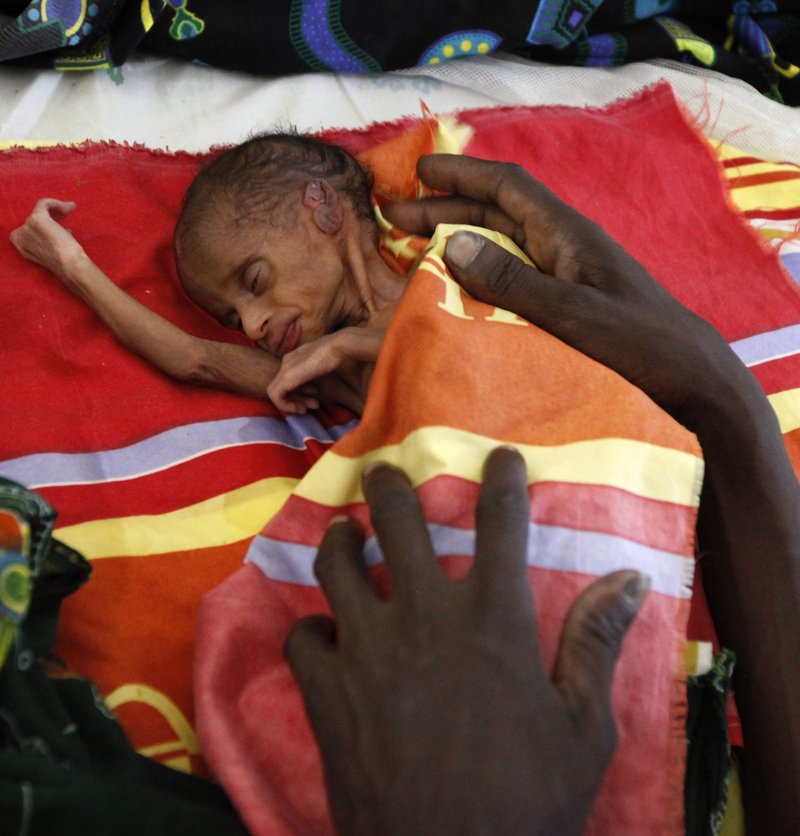AKOBO, Sudan — Three-day-old Odong Obong lay in the hospital bed, his pencil-thin arms almost motionless and his shriveled, gaunt face resembling that of an elderly man.
Emaciated babies and young children throughout the ward bore the signs of hunger: exposed ribs and distended stomachs. Outside, old villagers reclined motionless in the shade, too frail to walk.
The U.N. calls this the “hungriest place on Earth” after years of drought and conflict, with aid agencies already feeding 80,000 people here. A doctor says the worst is yet to come.
Two years of failed rains and tribal clashes have laid the foundation for Africa’s newest humanitarian crisis.
The World Food Program quadrupled its assistance levels from January to March in the Akobo region of southeastern Sudan.
International aid agencies are bracing for the worst. Even if spring rains materialize this year, the harvest won’t come in until fall.
“And if there is no rain, it will get worse,” said Dr. Galiek Galou, one of three doctors at the hospital in this town on the border with Ethiopia.
“If you stay here for a week you’ll have problems, even if you have money,” he said. “There is nothing to buy.”
Southern Sudan lies in a drought-prone belt of Africa, but the situation has been exacerbated by rising intertribal violence that claimed more than 2,000 lives in 2009. Because of the global financial meltdown, the government has fewer available resources.
The food crisis is also a legacy of a devastating north-south civil war of more than 21 years that left 2 million people dead and many more displaced. That conflict is separate from the war in the western Sudanese region of Darfur, which began in 2003 and has killed 300,000.
The aid groups Save the Children and Medair have canvassed the Akobo community for the past week, searching for the hungriest children. They found 253 who they classified as severely malnourished, meaning they will die without immediate intervention.
The children are enrolled in a feeding program that relies primarily on fortified peanut butter.
Another 200 severely malnourished children are being fed in a separate program, said the U.N.’s Dr. Natalie Lewin.
At the hospital, Odong lies on colorful blankets under mosquito netting with his triplet brothers Opiew and Ochan. Their mother hovers at the side of the bed.
“The hunger situation is really bad,” said Goi Juoyul Yol, 37, the town’s top official, who graduated from the University of Kentucky. “You’ll have a cup of grain for a family of five for two days.”
Send questions/comments to the editors.



Success. Please wait for the page to reload. If the page does not reload within 5 seconds, please refresh the page.
Enter your email and password to access comments.
Hi, to comment on stories you must . This profile is in addition to your subscription and website login.
Already have a commenting profile? .
Invalid username/password.
Please check your email to confirm and complete your registration.
Only subscribers are eligible to post comments. Please subscribe or login first for digital access. Here’s why.
Use the form below to reset your password. When you've submitted your account email, we will send an email with a reset code.